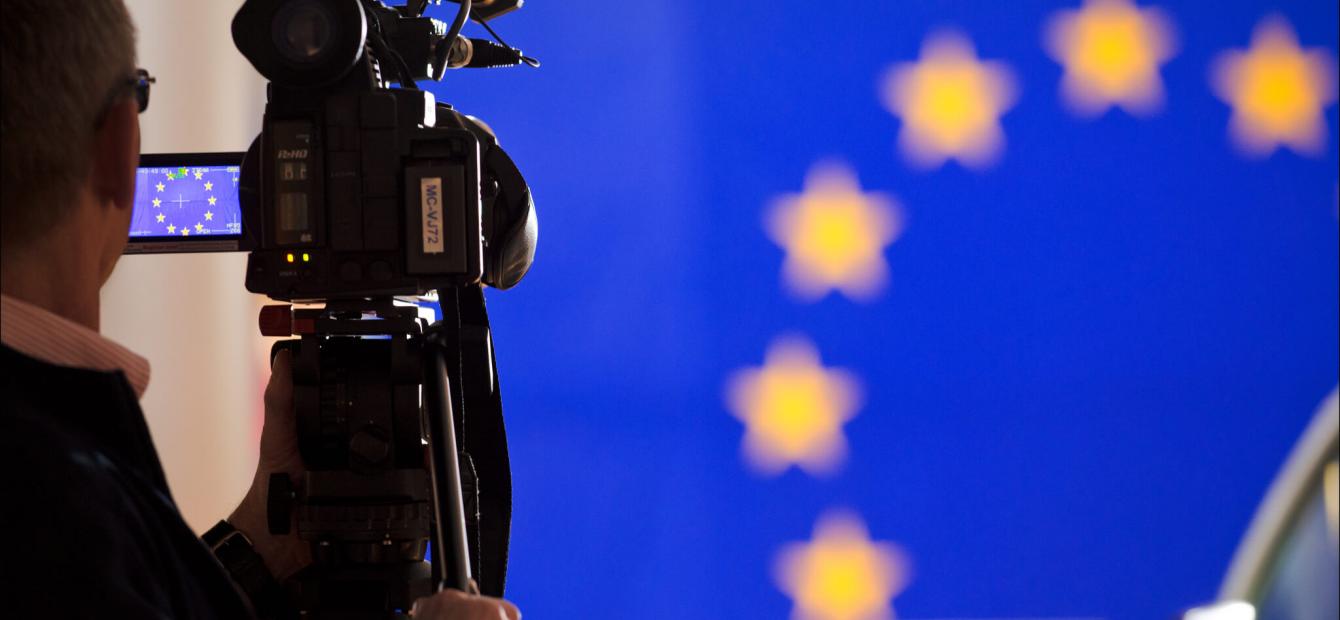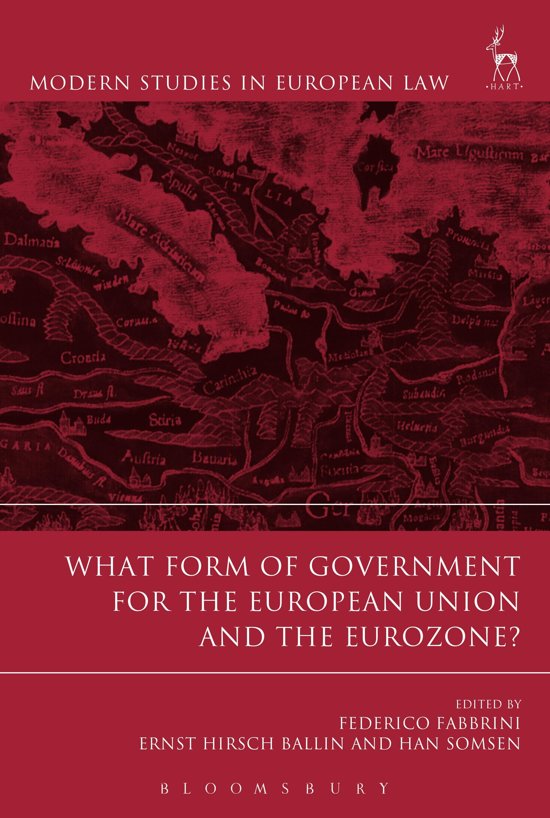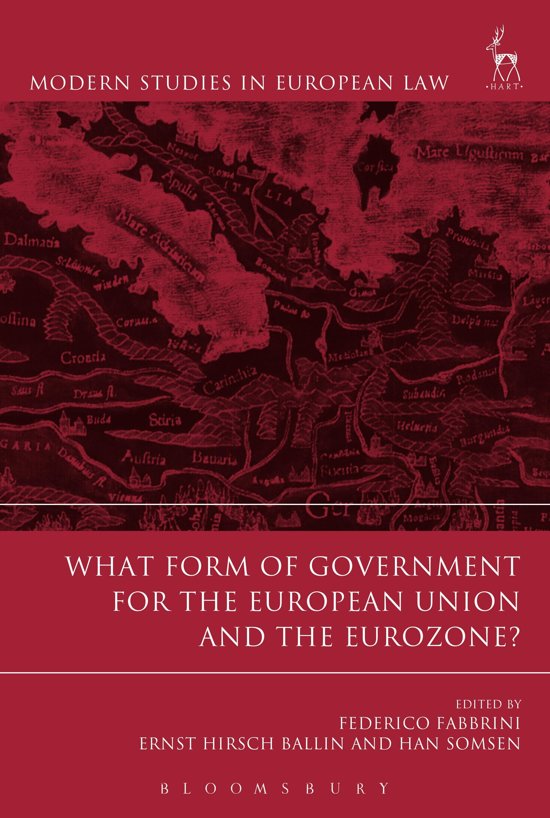
Towards a constitutional redesign of the EU and Eurozone
What type of government would suit the European Union best? And how is the institutional governance of the Eurozone developing? These pressing questions occupy researchers more than the European political leaders. For years, the latter have been leaning back complacently since the huge monetary injections of the European Central Bank (ECB) have averted the crisis in the Eurozone in 2012.
What Form of Government for the European Union and the Eurozone? is the result of a conference held in June 2014 at the Tilburg Law School. As the editors state, the purpose of the book is to return the topic of the form of government of the European Union to the centre of academic analysis. The contributions were supplied by a colourful company of EU lawyers, comparative constitutional lawyers and political scientists. In 300 pages fifteen authors shed light on the institutional changes and the desired form of government for the EU and the Eurozone. Their opinions reveal a gap between their pleas for a thoroughly constitutional redesign of the EU / Eurozone and the political climate of today.
The storm around Greece and the other weak countries from the Eurozone nearly caused the EU to capsize between 2010 and 2012. Through the European Council the national leaders were forced to ‘save Europe’ during three years of crisis. Only after seventeen lengthy summit meetings, frequently under pressure from the financial markets, did the crisis settle. This course tells us who sets the tone in the EU as soon as tensions rise, that is the European Council, according to the editors. And important to note in this respect is that this operation was driven by the phenomenon ‘Merkozy’ (Chancellor Merkel and President Sarkozy) and European Council President Van Rompuy.
Is the Euro Summit crisis-resistant?
As the editors state in the book’s introduction, the Eurozone crisis proved the institutional governance of the Eurozone can cope with serious crises. This is an important conclusion, also for the future. Various authors describe how the euro crisis moreover “has produced significant changes in the horizontal and vertical allocation of powers within the EU.” The intergovernmental European Council together with its president “emerged as the agenda-setter on how to respond to crises.” At the same time the European Commission acquired new pervasive powers to police the fiscal policy of the Member States. In short, both pillars on which the EU rests, the supranational and the intergovernmental, have been strengthened by the crisis. Finally the so-called Fiscal Compact codified the permanent existence of the Euro Summit, the grouping of the leaders of the Eurozone countries.
The Eurozone’s financial and economic crises were the toughest nuts ever cracked by the European Council and the Euro Summit. The crises revealed “the EU’s institutional resilience, its capacity to survive and its ability to legislate under stress.” Paul Craig (Oxford University) moreover refers to the hard-fought political battles which in the unfolding financial crises often resulted in intergovernmental solutions. The famous ‘Community method’, the triangle Commission/Council of Ministers/European Parliament remained in second place.
Both pillars on which the EU rests, the supranational and the intergovernmental, have been strengthened by the Eurozone crisis
Craig’s article is followed by daydreams from Christian Calliess (Legal advisor to the European Political Strategy Centre) given the political unfeasibility of his approach: “Treaty reform, aimed at the establishment of a Fiscal Union, a Banking Union and a genuine Economic Union with appropriate decision-making procedures and technical rules, if necessary by a selective coalition of member states.” Calliess also proposes the creation of a separate European Parliament for the countries with the euro “that might pave the way for this constitutional leap forward.”
Part II of the book concentrates on ‘The Governance of Economic, Monetary and Financial Affairs’. The perfect model here would be a partial federalisation of the economic policies of the Eurozone countries, which would make it comparable with the existing EU federal ruled monetary policy. But that is politically unfeasible, as Alexandre de Streel (University of Namur) acknowledges. Hence his advice to improve the current surveillance and coordination of the national economic policies based on the dialogue governments-Commission-Council of Ministers.

Disputable interventions by the European Central Bank
The detailed 2011 agenda for profound economic reform in Italy was – remarkably - not written by the government nor by any Brussels EU-institution, but by the ECB. The bank insisted on such a reform as a condition for monetary aid. This approach raises the question of the desirability of such direct intervention by the ECB in the policy-making of a nation. In this regard, Thomas Beukers (European University Institute) raises the politically sensitive question whether the conditionality the ECB attaches to its readiness to buy Italian government bonds, is supported by the mandate of the bank. Beukers moreover highlights the interesting question to what extent the active participation of the ECB in (European) Council meetings, from a democratic perspective, is compatible with its independence.
Who unveils the secrets of the European Council?
The third part of the book addresses the question of ‘Democratic Accountability of EU Executive Power’. In her chapter, Simona Piattoni (European University Institute) signals how the crisis puts national parliaments and the European Parliament in the picture when looking for solutions. Subsequently, however, Christian Marxsen (Max Planck Institute) warns “that as practised today the mechanisms of participatory democracy do not contribute to the legitimacy of the European political process.” This kind of participation is often no more than “a rhetorical device used to imply that the European political process is more open than it actually is.”
Will the European Parliament ever lift the veil off the secrets of the closed European Council? That is Deirdre Curtin’s question. In how far have formal and informal modes of accountability to national parliaments and the EP compensated for the rise of executive power within the EU? Curtin (University of Amsterdam; currently European University Institute) regrets how much “the EP has allowed itself to be sucked into the secretive vortex of closed-door ‘negotiations’ on legislation before the first reading in plenary, and also accepted Council rules on secrecy in a host of inter-institutional agreements.” This indicates that the (European) Council / Euro Summit, and the Commission can continue their limited openness to the full.
Moreover, the fact that the European Council is increasingly doing away with formal documents makes control even more difficult. Curtin’s advice is that both the national parliaments and the EP “roll up their shirtsleeves.” They should fight for “less secrecy with the parameters debated in public (legislation) and more dialogue,” with more “learning horizontally by parliaments across levels of representation.”
New intergovernmentalism in response to euroscepticism
The paradox of the nearly three decades since the Maastricht summit (1991) with its subsequent series of treaties, is that the Member States have been willing to expand integration “to all key areas of public-policy-making including areas of core state sovereignty” (like the currency, foreign policy, justice), but refused to delegate new powers to supranational authorities like the Commission.
By way of the creation of the emergency fund EFSF largely outside the competences of the Commission, let alone of the EP; of the European Stability Mechanism, the Fiscal Compact and the Euro Plus Pact, the European Council did set important steps in the direction of intergovernmentalism, instead of using the standard Community Method, according to various authors. One of them, Uwe Puetter (Central European University, Budapest), points out how this ‘new intergovernmentalism’ is now spreading everywhere through, for example, the Eurogroup, and both the EcoFin and Foreign Affairs Council of Ministers. In this way, national leaders determine not only the content but also the pace at which the EU is developing. Integration on an intergovernmental model (i.e. without delegation) is their answer in the struggle with an increasing push-back of a eurosceptic citizenship.
In summary, this book presents an excellent overview of the range of options the academic world provides for a strongly adapted and improved institutional structure of the Union. The authors, however, fail to face the political reality with their plea for such “brave institutional reforms” in order “to bring about a real change to the existing EU intergovernmental system of governance.”
The Lisbon Treaty has been functioning smoothly for ten years now. In the meantime Europe has been challenged by four crises (eurozone, migration, Brexit, Russia / Ukraine). With this in mind a radically different post-crisis EU architecture seems highly unlikely. Yet, the moot point of this book, the required institutional restructuring of the Union, has never been discussed in the 66 meetings the European Council held in this decade. For the national leaders, responsible for this task, the here proposed ‘ever closer union’ is, in other words, not even a matter of discussion.

Federico Fabbrini, Ernst Hirsch Ballin and Han Somsen (editors) What Form of Government for the European Union and the Eurozone? Oxford: Hart Publishing Ltd, 2017; 313 pp.; € 73,40 (hardcover) /; € 32,78 (Ebook); ISBN: 978-1-84946-810-7




0 Comments
Add new comment